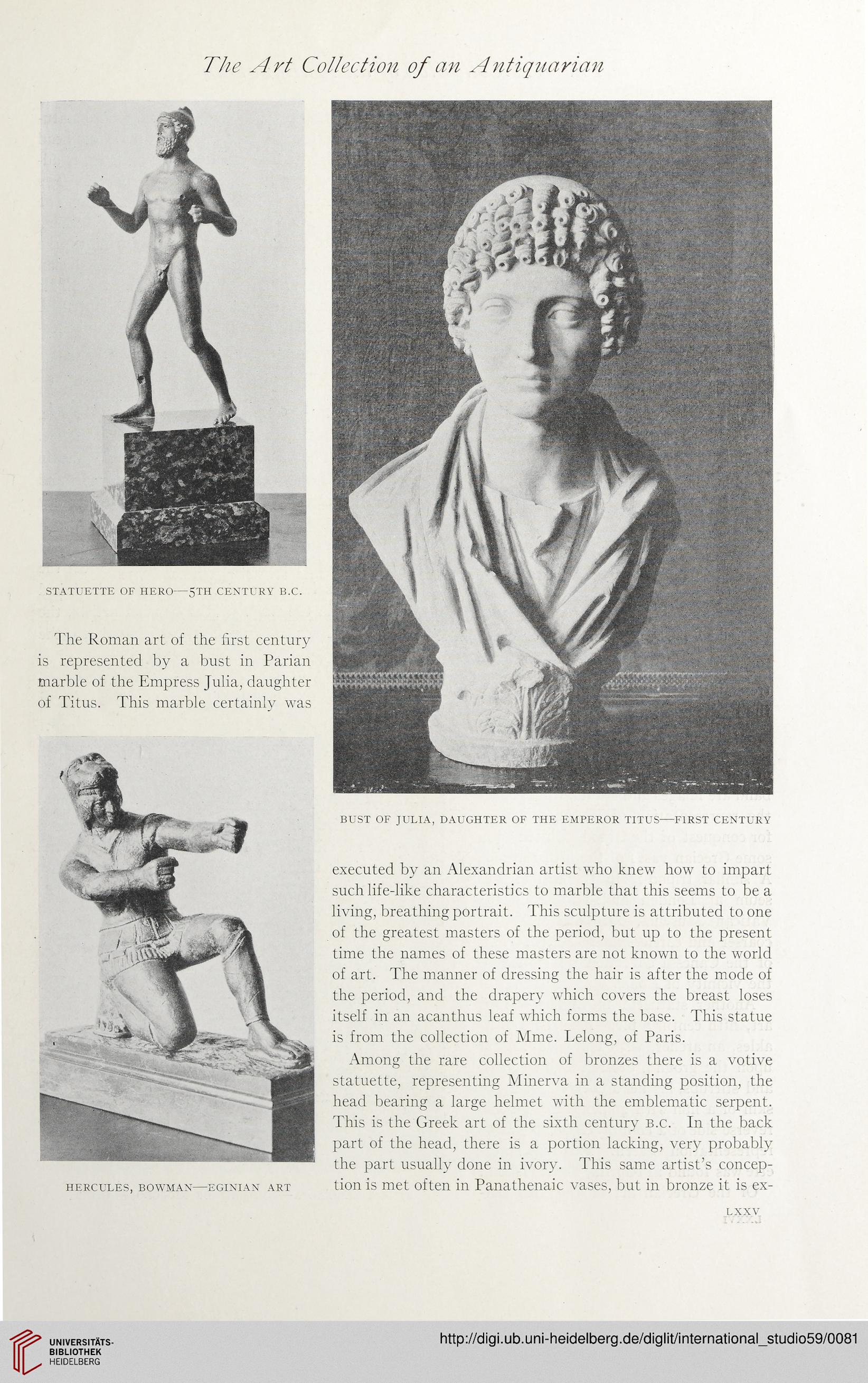The Art Collection of an Antiquarian
The Roman art of the first century
is represented by a bust in Parian
marble of the Empress Julia, daughter
of Titus. This marble certainly was
HERCULES, BOWMAN—EGINIAN ART
BUST OF JULIA, DAUGHTER OF THE EMPEROR TITUS—FIRST CENTURY
executed by an Alexandrian artist who knew how to impart
such life-like characteristics to marble that this seems to be a
living, breathing portrait. This sculpture is attributed to one
of the greatest masters of the period, but up to the present
time the names of these masters are not known to the world
of art. The manner of dressing the hair is after the mode of
the period, and the drapery which covers the breast loses
itself in an acanthus leaf which forms the base. This statue
is from the collection of Mme. Lelong, of Paris.
Among the rare collection of bronzes there is a votive
statuette, representing Minerva in a standing position, the
head bearing a large helmet with the emblematic serpent.
This is the Greek art of the sixth century B.c. In the back
part of the head, there is a portion lacking, very probably
the part usually done in ivory. This same artist’s concep-
tion is met often in Panathenaic vases, but in bronze it is ex-
lxxv
The Roman art of the first century
is represented by a bust in Parian
marble of the Empress Julia, daughter
of Titus. This marble certainly was
HERCULES, BOWMAN—EGINIAN ART
BUST OF JULIA, DAUGHTER OF THE EMPEROR TITUS—FIRST CENTURY
executed by an Alexandrian artist who knew how to impart
such life-like characteristics to marble that this seems to be a
living, breathing portrait. This sculpture is attributed to one
of the greatest masters of the period, but up to the present
time the names of these masters are not known to the world
of art. The manner of dressing the hair is after the mode of
the period, and the drapery which covers the breast loses
itself in an acanthus leaf which forms the base. This statue
is from the collection of Mme. Lelong, of Paris.
Among the rare collection of bronzes there is a votive
statuette, representing Minerva in a standing position, the
head bearing a large helmet with the emblematic serpent.
This is the Greek art of the sixth century B.c. In the back
part of the head, there is a portion lacking, very probably
the part usually done in ivory. This same artist’s concep-
tion is met often in Panathenaic vases, but in bronze it is ex-
lxxv




